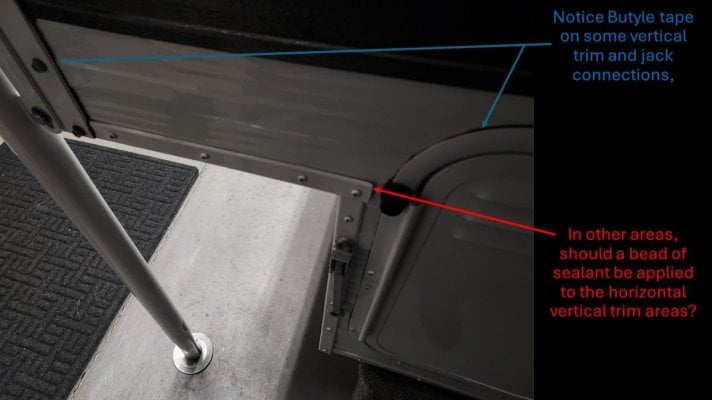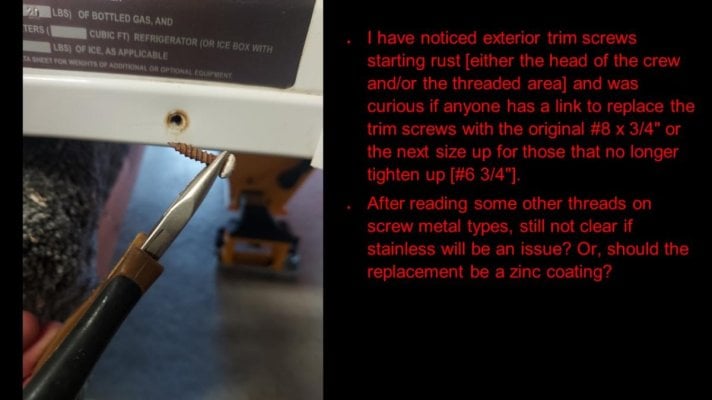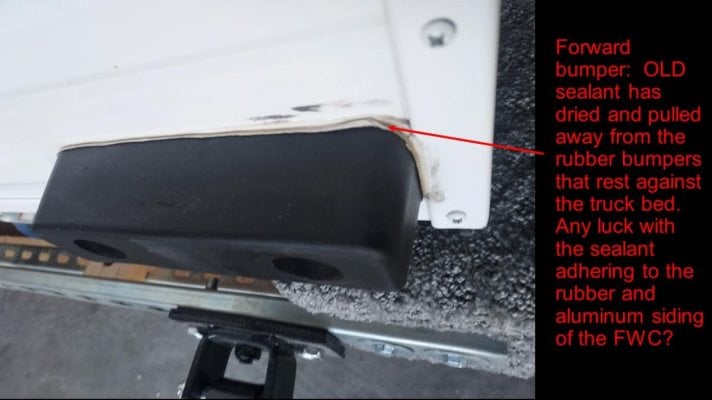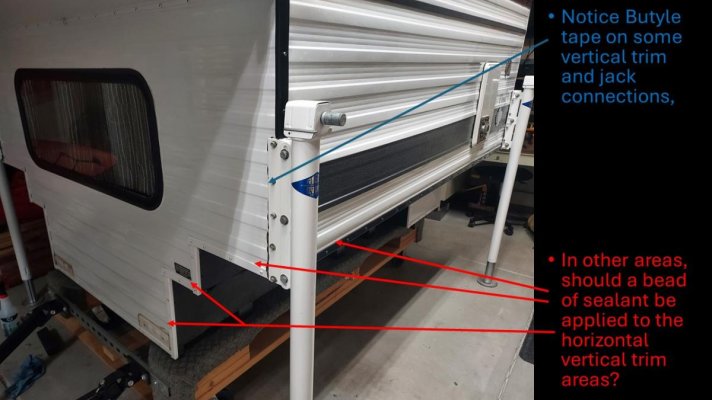ckent323
Senior Member
There are many threads on various repairs we make to our campers and often suggestions on Adhesives, Sealants and Caulks are made.
Frequently there is little or no discussion of the appropriate sealant, adhesive or caulk based on the materials involved or the specific application (e.g. roof leaks, window sealing or fasteners, Aluminum, Steel, etc).
Consider that there are literally many dozens if not hundreds of different sealants, adhesives or caulks.
Why so many, are they performing similar jobs? The short answer is no.
Besides the fact that there are numerous different manufacturers of adhesives, sealants and caulk, digging in a bit we find that each manufacturer may have numerous different products each designed for a specific application and/or material.
Aside from brand differences (or similarities) and marketing claims there is a lot of chemical and structural engineering behind these products so it makes sense to learn a bit about selecting the appropriate product for your application and materials.
Here are some informative links that may help sort all this out relative to RVs (the subject is much larger when considering buildings and other applications!):
https://www.practical-sailor.com/boat-maintenance/the-great-stickup-practical-sailor-tests-marine-adhesives-caulks-and-sealants?fbclid=IwAR3oUg0zZ2Z3OUhybFsCnsSgtZjTSYkhSPdLAkf8dXspnuj3_JE-_0DYD_s
https://www.thervgeeks.com/rv-caulk/
https://askthervengineer.com/my-favorite-rv-caulks-and-sealants-not-just-another-schmoozy-amazon-list/
and a serious read on adhesives and sealants (pdf document)
https://users.fs.cvut.cz/libor.benes/vyuka/lepeni/Handbook%20of%20Adhesives%20and%20Sealants.pdf
I hope this is incentive to dig further before simply being overwhelmed by all the choices at Home Depot, Lowes, Ace, Menards, McGuckin, OSH, West Marine, Autozone, O'Reilleys or whatever and just using something because of brand identity or someone said that is what they use (for who knows what reason or application).
Wishing all successful sticking and sealing wherever you may do it.

Craig
Frequently there is little or no discussion of the appropriate sealant, adhesive or caulk based on the materials involved or the specific application (e.g. roof leaks, window sealing or fasteners, Aluminum, Steel, etc).
Consider that there are literally many dozens if not hundreds of different sealants, adhesives or caulks.
Why so many, are they performing similar jobs? The short answer is no.
Besides the fact that there are numerous different manufacturers of adhesives, sealants and caulk, digging in a bit we find that each manufacturer may have numerous different products each designed for a specific application and/or material.
Aside from brand differences (or similarities) and marketing claims there is a lot of chemical and structural engineering behind these products so it makes sense to learn a bit about selecting the appropriate product for your application and materials.
Here are some informative links that may help sort all this out relative to RVs (the subject is much larger when considering buildings and other applications!):
https://www.practical-sailor.com/boat-maintenance/the-great-stickup-practical-sailor-tests-marine-adhesives-caulks-and-sealants?fbclid=IwAR3oUg0zZ2Z3OUhybFsCnsSgtZjTSYkhSPdLAkf8dXspnuj3_JE-_0DYD_s
https://www.thervgeeks.com/rv-caulk/
https://askthervengineer.com/my-favorite-rv-caulks-and-sealants-not-just-another-schmoozy-amazon-list/
and a serious read on adhesives and sealants (pdf document)
https://users.fs.cvut.cz/libor.benes/vyuka/lepeni/Handbook%20of%20Adhesives%20and%20Sealants.pdf
I hope this is incentive to dig further before simply being overwhelmed by all the choices at Home Depot, Lowes, Ace, Menards, McGuckin, OSH, West Marine, Autozone, O'Reilleys or whatever and just using something because of brand identity or someone said that is what they use (for who knows what reason or application).
Wishing all successful sticking and sealing wherever you may do it.
Craig




